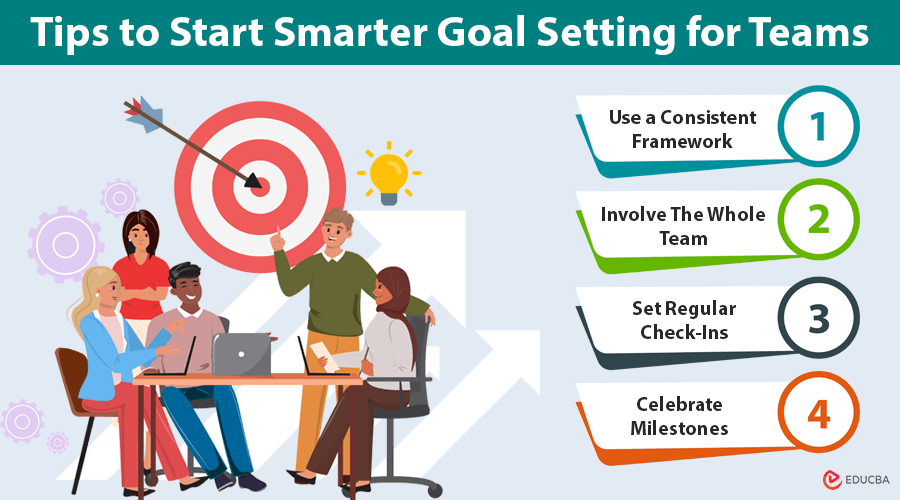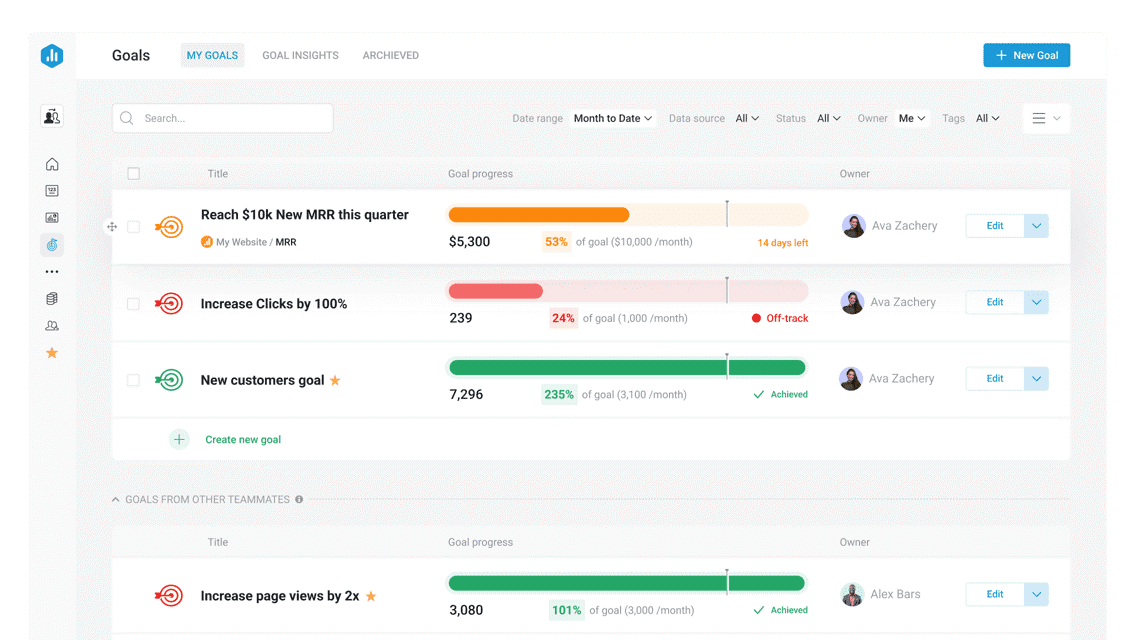
Goal Setting for Teams: Overview
Every great project begins with a clear vision. Teams come together with high hopes, big goals, and the motivation to succeed. However, not all of them reach the finish line. Why? It is often not a lack of effort or talent but because goal setting for teams is broken.
In fast-paced work environments, especially for growing teams, unclear goals, scattered tracking, and lack of visibility can hinder progress. Modern tools and methods can change how teams set, track, and achieve goals.
In this article, we will look at how effective goal setting for teams can boost success, the problems with traditional approaches, and how the right tools can make a big difference.
Problem with Traditional Goal Setting for Teams
Let us start by addressing the elephant in the room—why traditional goal-setting methods often fail.
1. Goal Tracking Gets Messy
Many teams still rely on spreadsheets, disconnected apps, or handwritten notes to track progress. While these might work early, they quickly fall apart as teams scale.
Manual tracking creates several problems:
- Important updates get lost.
- Progress reports are inconsistent.
- Human error increases with complexity.
- Teams waste time digging through scattered data.
Without a centralized system, there is no single source of truth. This lack of structure makes it difficult to hold team members accountable or spot issues early.
In contrast, modern goal tracking software offer streamlined tracking, real-time dashboards, and automated updates—all in one place. This enhances clarity and accountability across the board.
(Image Credit: Databox)
2. No Real-Time Picture of Progress
Old-school tracking methods do not provide instant feedback. Team leads often find out something is wrong only when it is too late. You might have to sift through five spreadsheets and three apps to know where a project stands today.
When progress is not visible in real-time:
- Managers cannot pivot strategies when needed.
- Teams miss opportunities to celebrate small wins.
- Projects get delayed due to overlooked bottlenecks.
With digital solutions, goal setting for teams becomes more transparent. Real-time tracking and alerts help leaders identify gaps early and stay agile.
3. Employees Do Not See How They Contribute
People are to share goals. However, team members often feel left out when objectives are only discussed at the leadership level or hidden in private sheets. They do not understand how their work ties into the bigger picture.
This disconnect leads to:
- Low motivation
- Reduced ownership
- Missed opportunities for collaboration.
Effective goal-setting for teams ensures that each member understands their individual goals and how they contribute to the company’s broader mission. With the right tools, assigning goals, tracking progress, and showing how every task fits into the larger framework is easy.
3 Key Ingredients of High-Impact Goal Setting for Teams
Setting goals is not just about choosing targets. Growing teams need to focus on strategy, alignment, and ongoing evaluation. Here are the three core elements of successful team goal setting:
1. Clarity
Clarity is the foundation of goal achievement. Without clear objectives, teams struggle to focus their energy. Clear goals define:
- What does the team need to achieve?
- How will success be measured?
- Who is responsible for each task?
One of the most effective frameworks for clarity is OKR (Objectives and Key Results). OKRs tie each objective to measurable outcomes. Modern goal-setting tools help teams set OKRs quickly and efficiently, connecting each goal to relevant KPIs.
When clarity is present, teams waste less time guessing and more time executing.
2. Alignment
Even the best goals can fall apart if they are not aligned across departments. Imagine a marketing team working to boost engagement while leadership focuses on acquisition. Without alignment, goals become fragmented, and teams pull in different directions.
For effective goal setting for teams, alignment means:
- Every department understands the company’s main priorities.
- Goals at all levels support the same strategic vision.
- Team objectives complement rather than compete with each other.
Goal-tracking platforms allow teams to set nested or cascading goals, making connecting team-level goals with company-wide objectives easier.
3. Visibility
Visibility is about giving everyone access to progress updates, whether it is the CEO or a junior associate. When progress is visible:
- Teams stay motivated
- Teams catch issues early
- Collaboration improves.
Modern tools make goal setting for teams a shared experience. Dashboards, notifications, and performance metrics are available, keeping teams aligned and informed. This visibility creates a sense of shared responsibility and drives consistent execution.
How do Goal-Setting Tools Transform Team Performance?
Let us take a moment to look at how dedicated goal-setting tools elevate team success:
- Centralized data: Forget multiple tabs and apps. These tools bring all your goals, metrics, and updates into one platform, reducing confusion and saving time.
- Automated tracking: No more manual reporting. Automated updates and alerts inform everyone in real-time, allowing faster decision-making and less administrative work.
- Individual and team-level goals: Most tools allow you to set goals at both the individual and team levels. This ensures every person knows what they are working toward and how it fits into the larger plan.
- Progress visualization: Seeing is believing. Progress bars, timelines, and visual indicators help track performance at a glance, making it easier to stay on target.
Tips to Start Smarter Goal Setting for Teams
Ready to transform how your team sets and tracks goals? Here are a few tips to get started:
- Use a consistent framework: Whether OKRs or SMART goals, choose a framework that fits your workflow and stick to it.
- Involve the whole team: Encourage input from everyone when setting goals. This boosts engagement and increases buy-in.
- Set regular check-ins: Weekly or bi-weekly reviews help identify obstacles and make timely adjustments.
- Celebrate milestones: Recognize progress, even small wins. It keeps motivation high and promotes a culture of success.
Final Thoughts
Successful goal setting for teams is not about setting more goals but the right ones and tracking them efficiently. Traditional methods often fall short in fast-paced environments. However, with the right tools and strategies, growing teams can align around a shared vision, measure what matters, and execute confidently.
It might be time to rethink your approach if your team struggles with missed deadlines, unclear priorities, or scattered tracking. Investing in smart, collaborative goal-setting practices will bring you one step closer to turning your team’s vision into measurable success.
Recommended Articles
We hope this article helped you understand the importance of goal setting for teams and how the right tools can transform your team’s performance. Check out these recommended articles for more insights on team productivity, modern project management strategies, and collaborative goal-setting frameworks.

